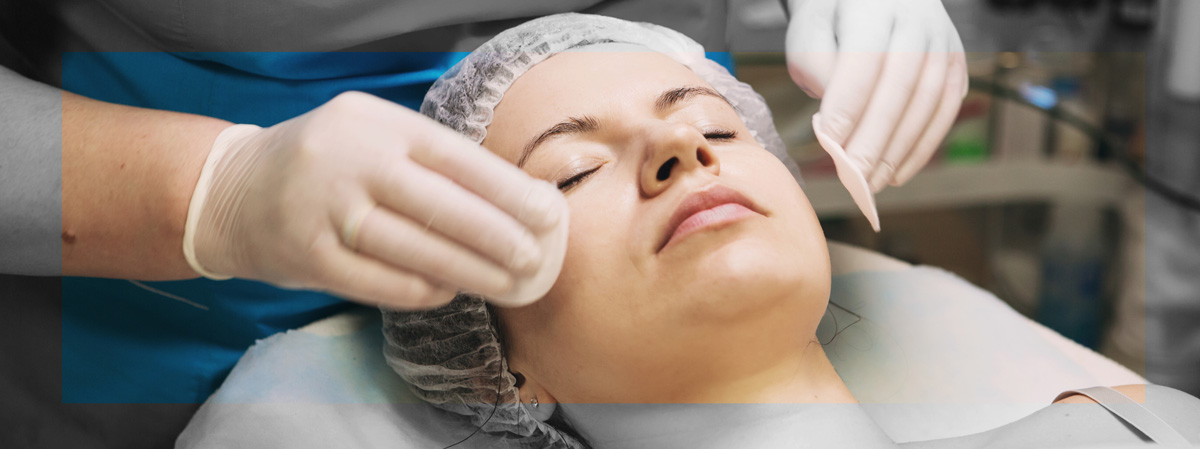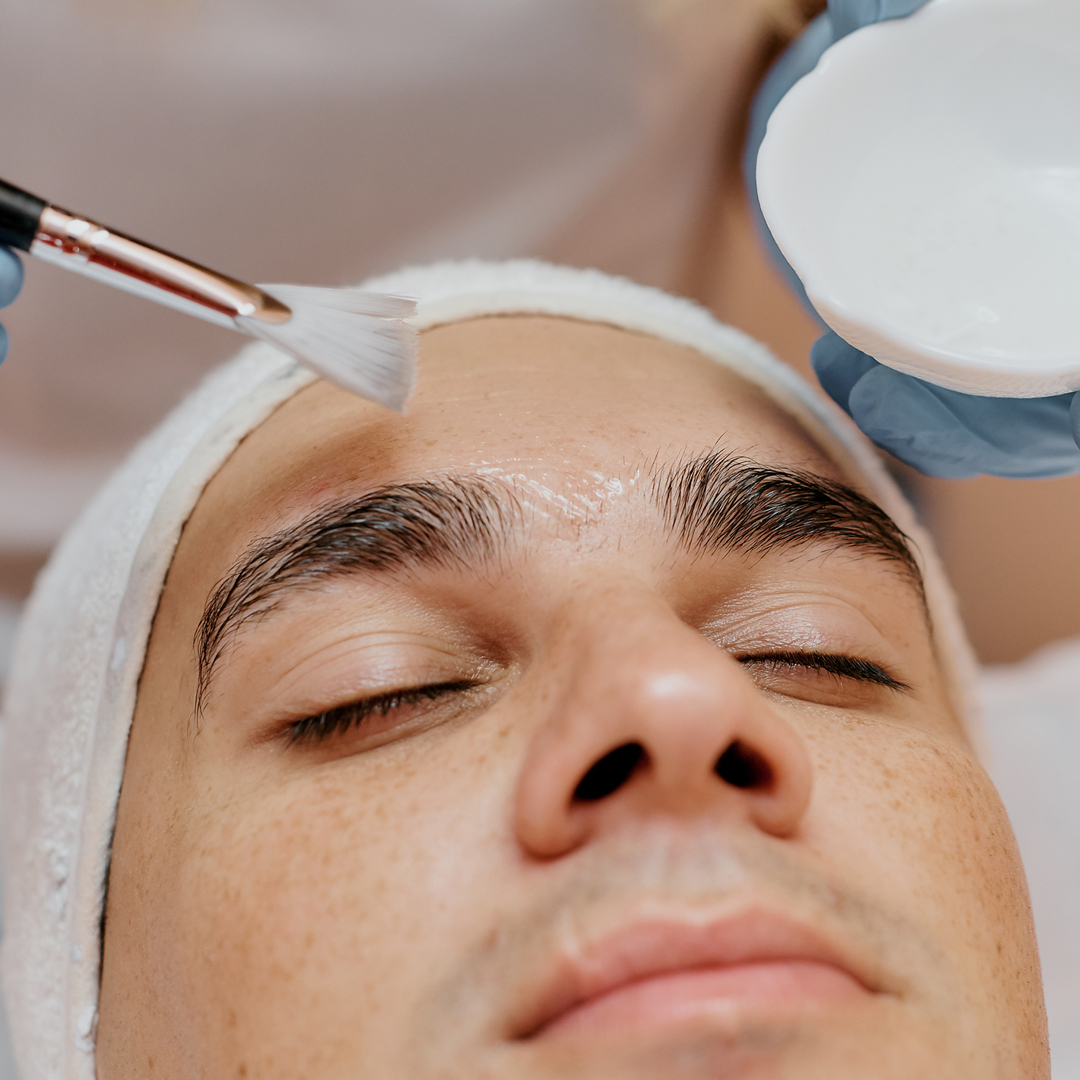
Chemical Peel in Boulder
A chemical peel is a technique used by dermatologists and estheticians to improve the skin’s appearance, as well as areas on the neck and hands. A chemical solution is applied to the surface of the skin in layers, depending on the severity of the skin’s issues. The purpose of the chemical peel is to cause the skin to shed old and damaged skin and naturally exfoliate to reveal new regenerated skin that is usually smoother and healthier.
When performed in a dermatology office, chemical peels are carefully tailored to address specific skin conditions while minimizing risks. Your provider will assess your skin type, medical history, and treatment goals to determine the safest and most effective peel regimen. This professional evaluation ensures the procedure not only improves the skin’s appearance but also supports overall skin health.
Skin conditions that chemical peels treat:
- Acne/acne scarring – Chemical peels can help unclog pores, reduce active acne, and smooth the surface of skin affected by certain types of acne scars.
- Aging skin – Peels can remove damaged outer layers, improving skin texture and reducing the appearance of fine lines caused by natural aging.
- Hyperpigmentation – By exfoliating discolored skin cells, chemical peels can help even out areas of excess pigment from sun exposure or inflammation.
- Melasma – Dermatologist-supervised peels may lighten patches of darkened skin caused by hormonal changes or sun sensitivity.
- Sun damaged skin – Peels can remove precancerous or severely damaged cells, promoting healthier skin growth after chronic UV exposure.
- Scars – Certain peels can reduce the appearance of superficial scars by smoothing rough or uneven skin surfaces.
Medical Benefits of Chemical Peels for Skin Health
Chemical peels are not only a proven treatment for improving the skin’s appearance but also play an important role in addressing certain medical skin conditions under a dermatologist’s care. For patients with persistent acne, precancerous growths such as actinic keratoses, or chronic sun damage, a chemical peel can remove damaged skin cells and promote the growth of healthier tissue. This controlled exfoliation process can help reduce the recurrence of certain skin lesions and improve overall skin integrity, especially in patients with a history of excessive sun exposure.
At K2 Dermatology, chemical peels are performed in a medical setting where your skin is carefully evaluated before treatment. By removing layers of compromised skin, chemical peels can aid in preventing the progression of damage, making them a valuable component of medical skin care.
Types of Chemical Peels
There are a variety of chemical peels that are available depending on what your skin condition requires. The three basic types of peels are:
- Superficial peels: This chemical solution consists of a mild acid that penetrates the outermost layer of the skin’s surface and gently exfoliates it. This peel is best to improve the appearance of discoloration and refresh the area where the peel is applied.
- Medium peel: This type of peel usually consists of a glycolic acid that penetrates the surface and middle layers of the skin and removes damaged skin cells. Medium peels are most effective in improving age spots, lines and wrinkles, and moderate skin discoloration. The skin is left feeling smoother and refreshed.
- Deep peel: A deep peel solution contains a strong acid such as trichloroacetic acid, which penetrates deep beneath the skin’s surface to remove damaged skin cells and harsh skin conditions. The results from a deep peel are dramatic, and due to the strength of the peel, it can only be applied once.
Chemical peels are applied by a trained medical professional, who brushes the solution over a clean skin surface. Patients can expect the chemical peels to sting or may feel a slight burning sensation during the application. Once the treatment is complete, patients may experience redness similar to a sunburn, swelling, and irritation. Your dermatologist will suggest the best skin care products after your chemical peel.

Schedule Your Medical Chemical Peel!
If you are dealing with acne, sun damage, precancerous lesions, or other skin concerns that may benefit from a chemical peel, our board-certified dermatologists are here to help. At K2 Dermatology, each treatment is customized to your skin’s medical needs and performed in a safe, professional environment. Contact us today to schedule your chemical peel and take the next step toward healthier skin.
Frequently Asked Questions About Chemical Peels
Are chemical peels safe for all skin types?
Chemical peels can be performed on a wide range of skin types, but the safety and effectiveness depend on selecting the right peel solution and strength. A dermatologist will assess your skin tone, texture, and history of conditions such as eczema, rosacea, or past pigment changes before recommending a treatment. This evaluation helps minimize risks such as excessive redness, irritation, or post-inflammatory hyperpigmentation.
How long does recovery take after a chemical peel?
Recovery time varies depending on the depth of the peel. Superficial peels typically result in mild redness or flaking for a few days, while medium-depth peels may require 1–2 weeks of healing. Deep peels can take several weeks for the skin to fully recover. During this time, following aftercare instructions like moisturizing, sun protection, and avoiding makeup for a short period, help support proper healing and results.
